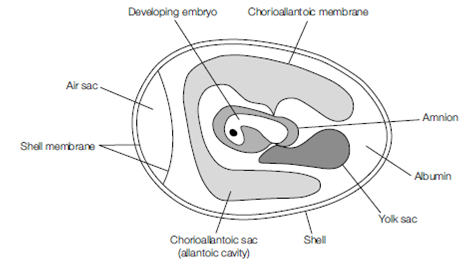Use of other systems
For some viruses cell culture is not the chosen procedure for virus amplification. An important example is influenza virus, which instead is propagated in vitro using fertilized chick embryos, which have a complex array of membranes and cavities that can support the growth of viruses. Small aliquots of influenza virus are inoculated into the

allantoic cavity of the egg. The virus then attaches to and replicates in the epithelial cells lining the cavity. Virus is released into the allantoic fluid and harvested after two days growth at 37?C. Influenza vaccines are propagated in this way. The human papillomavirus (HPV) infects only stratified epithelial tissues in vivo, and is dependent on the maturation of cells through the epithelium to complete its replication cycle. As such the virus cannot be amplified in ordinary monolayer-type cell cultures. Rather, specialized organotypic cultures are required to support the complete HPV replication cycle, wherein cells must demonstrate both proliferation and differentiation. In general, these culture systems are derived from HPV-infected biopsy samples or are epithelial or keratinocyte cell cultures that are ‘infected’ by way of viral DNA transformation.